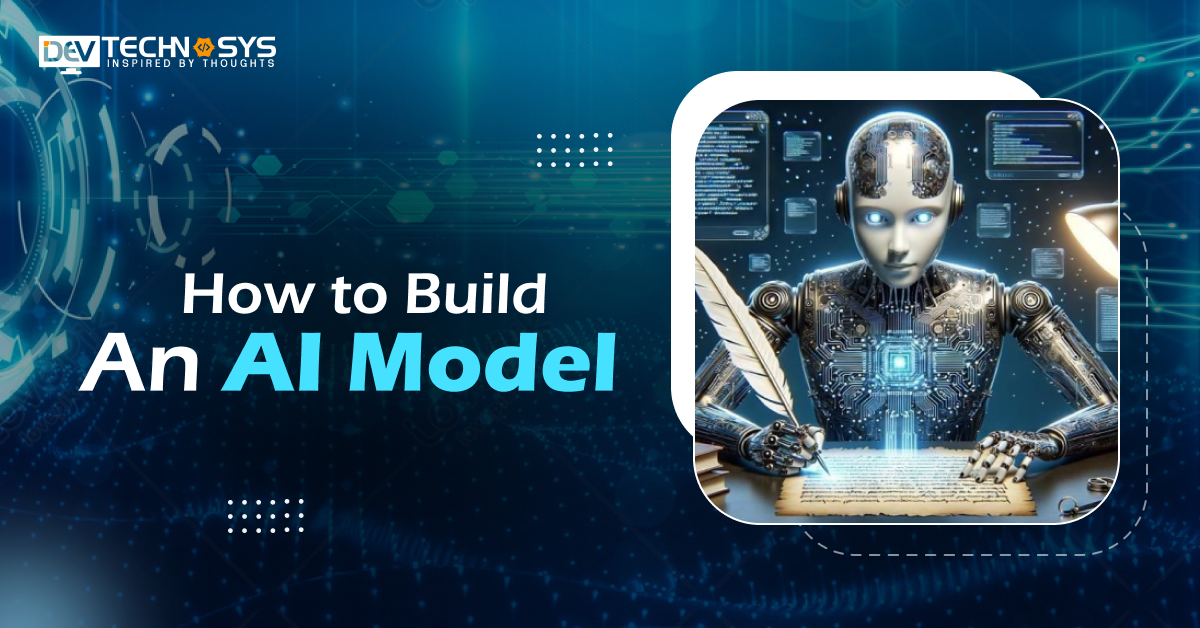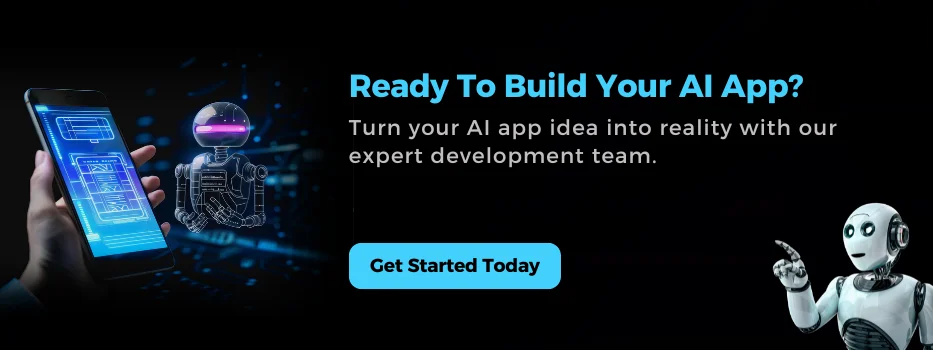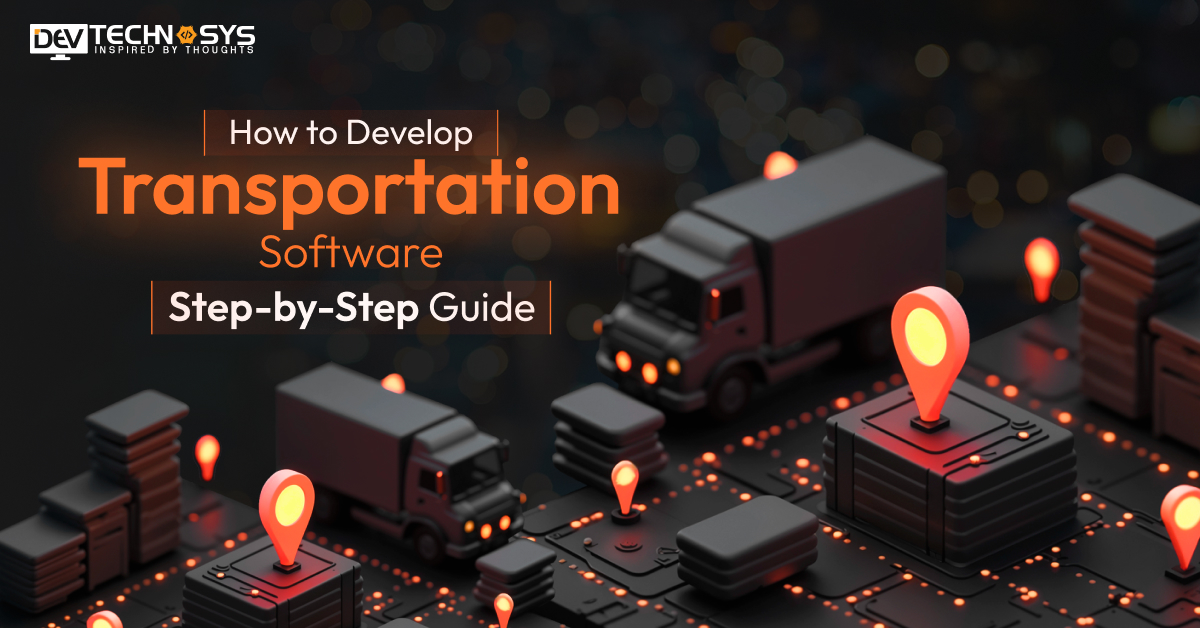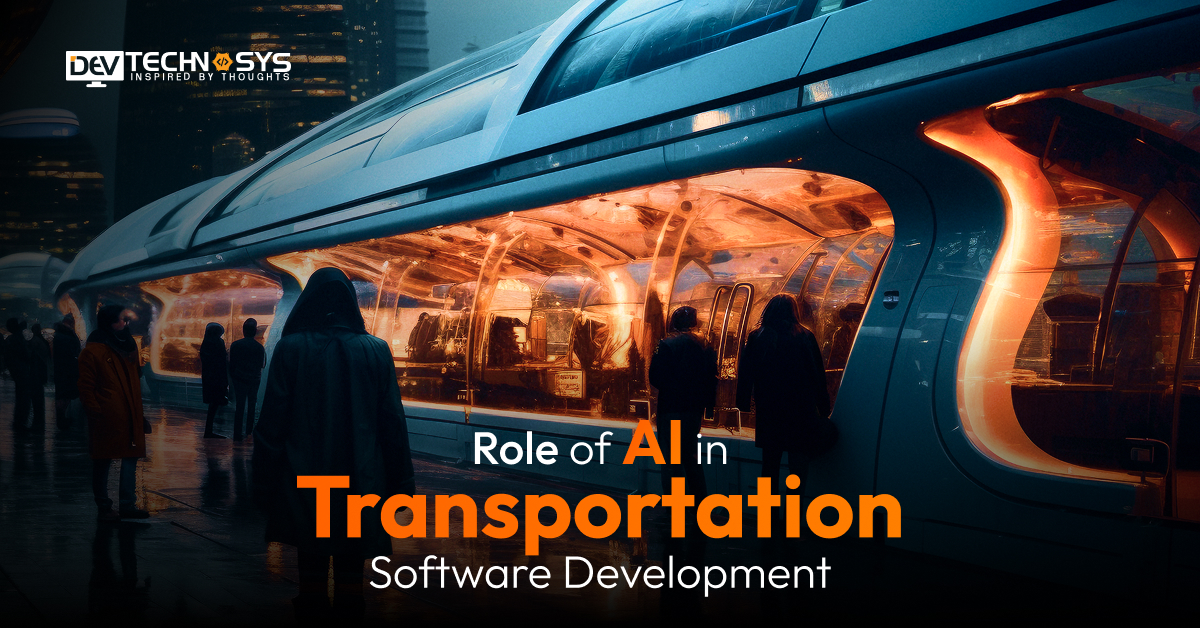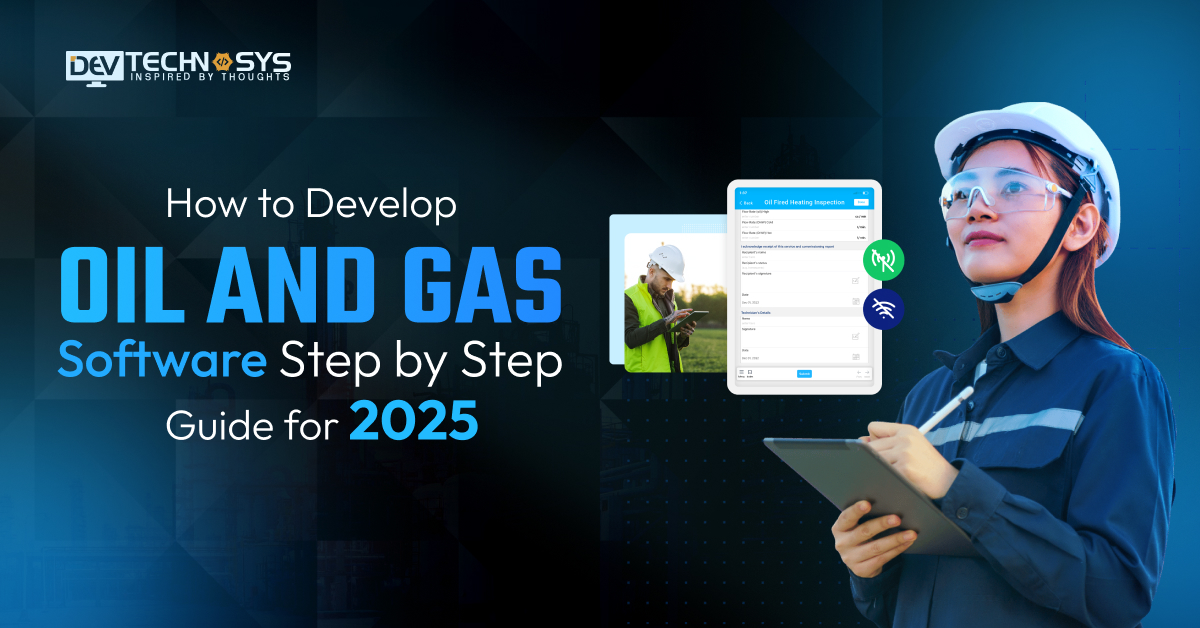We are on the cusp of the digital revolution in today’s technologically advanced world, where machines have nearly supplanted people in a variety of contexts. Investing money to build an AI model has become crucial for businesses to fulfill the demands of the modern world, as data drives innovation and algorithms pave the road to success.
A custom AI model is a great tool for streamlining difficult jobs and enhancing human abilities, which can lead to new levels of precision and efficiency. AI models can be used in countless industries for everything from financial forecasting to medical diagnosis.
How to develop an AI model for businesses is explained in this blog. By looking at how strategic intelligence and cutting-edge technology intersect, we will investigate the difficulties and processes to build AI models that allow businesses to excel in the real world.
What is an AI Model?
An advanced artificial intelligence system with strong cognitive abilities and the capacity to perform difficult tasks with understanding and judgment on par with human intellect is referred to as an “intelligent AI model.”
These models are developed using intricate algorithms and deep learning techniques, often involving neural networks. Money investment in Generative AI development services allows them to process massive amounts of data, identify patterns, and predict or act upon input.
To build a transformative AI model or application you need distinguished understanding, reasoning, learning, adapting, interacting, problem-solving, and producing precise outcomes. One example of an intelligent AI model is a language model such as ChatGPT, which can recognize objects, people, and situations in images and produce text that appears human-like when instructed.
How Does an AI Model Work?
Large datasets are processed by an AI model, which then uses algorithms to identify patterns and use that information to make predictions or judgments. With practice and feedback, it gradually increases its accuracy.
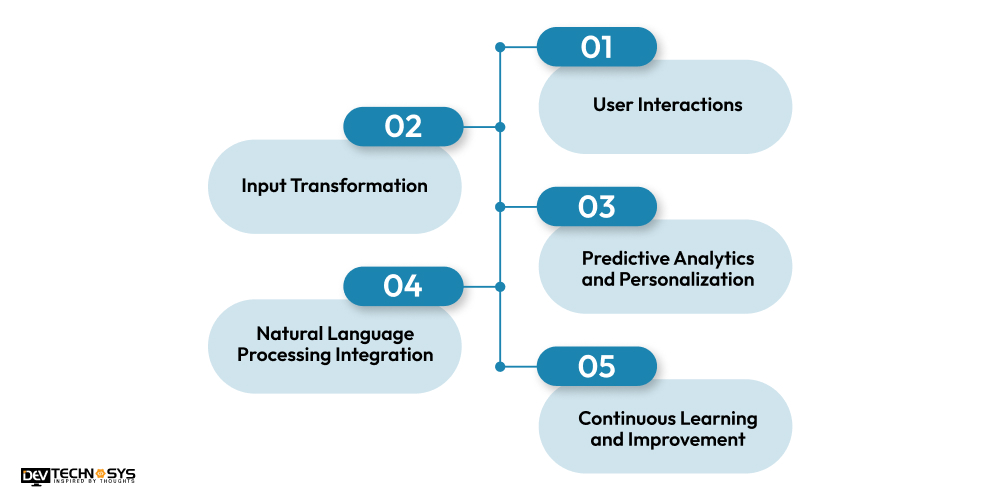
1. User Interactions
Mobile apps’ AI models gather information from user interactions, including usage trends, preferences, and behavior. After that, this data is processed to provide recommendations or actions that are specific to each user, so personalizing the app experience. So, it is profitable to invest in Artificial Intelligence development to initiate the process.
2. Input Transformation
Data from local devices or the cloud is used to create an AI model. By training models directly on the device, edge processing lowers latency and improves performance, enabling faster real-time decision-making without continuous internet connectivity.
3. Predictive Analytics and Personalization
To forecast future behavior or preferences, you can hire AI developers to examine user data from the past. AI improves user experience and engagement in apps like shopping and navigation by making personalized products, content, or route recommendations based on user history.
4. Natural Language Processing Integration
NLP is frequently used by AI models in mobile apps to comprehend and process human language. AI-driven natural language processing (NLP) is used by apps with voice assistants, chatbots, or language translation capabilities to understand user input and improve the efficiency and intuitiveness of interactions.
5. Continuous Learning and Improvement
Over time, mobile apps’ AI models get more accurate as they continuously learn from fresh data. The AI in the app improves its suggestions, forecasts, and general performance by examining continuous user interactions and feedback. Businesses can contact a software development company to improve the learning efficiency of the system.
Market Stats For Artificial Intelligence Technology
- As of 2024, Anthropic’s Claude 2.0 model was rated as the most trustworthy and responsible artificial intelligence (AI) model worldwide.
- It has a trustworthiness score of over 10 points different from the second-safest model, Hugging Face’s Llama-2-Chat-7b.
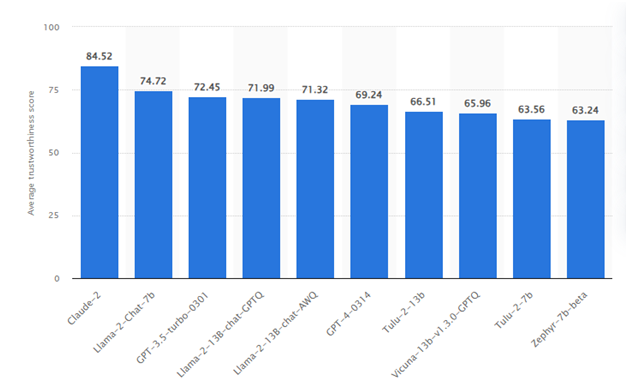
- Open AI’s GPT-3.5-turbo-0301 came in third place with an average trustworthiness score of approximately 5.
- The market for AI technologies is vast, amounting to around $200 Billion in 2023.
- It is expected to grow well beyond that to over $1.8 Trillion by 2030.
Know the Five-Layer AI Model
Enterprise AI architecture frequently consists of several levels to create a coherent AI system. One well-liked method that separates the many components of an AI system into discrete tiers, each with a specific purpose, is the five-layer model. The following is a description of the five-layer enterprise AI architecture paradigm:

1. Infrastructure
The computer power required to build an Artificial Intelligence app with high data processing and analysis is provided by the infrastructure layer. This layer is made up of hardware resources, such as servers, GPUs, and other specialized tools, that accelerate AI computations.
Cloud systems such as AWS, Azure, and Google Cloud offer scalable and flexible infrastructure options for businesses. It largely affects the custom AI model development cost thus giving a warning sign.
2. Data
The foundation of any AI system is data. The data layer is where data is gathered, saved, and preprocessed. This layer includes tasks like standardization, augmentation, transformation, and data purification. Well-structured, high-quality data is essential to develop robust AI models. Data lakes and warehouses are commonly used by businesses to store and handle large amounts of data.
3. Service
Alternatives of AI models can be deployed and maintained for apps, services, or end users are the responsibilities of the service layer. To facilitate communication between systems and AI models, this layer involves creating APIs.
It entails tasks including model deployment, scalability, and monitoring. So, you can hire Artificial Intelligence developers to add microservices, and container-based architectures that are widely used to expedite deployment and administration.
4. Model
At this layer, the real AI models are developed and trained. This layer involves selecting pertinent algorithms, designing neural networks, fine-tuning hyperparameters, and training models with labeled data. Using machine learning frameworks like TensorFlow and PyTorch, it is standard practice to build own AI models on this layer.
5. Application
At the application layer, business apps and processes are connected to AI capabilities. This layer includes software development solutions that make use of the AI models’ forecasts and recommendations as well as integrating AI insights into decision-making procedures.
These applications apply to a wide range of industries, including customer service, supply chain optimization, and fraud prevention.
What is the Process to Build an AI Model?
These are the procedures you must take to build an AI model. You may effectively create an AI model that tackles the issues facing your company by following these steps.
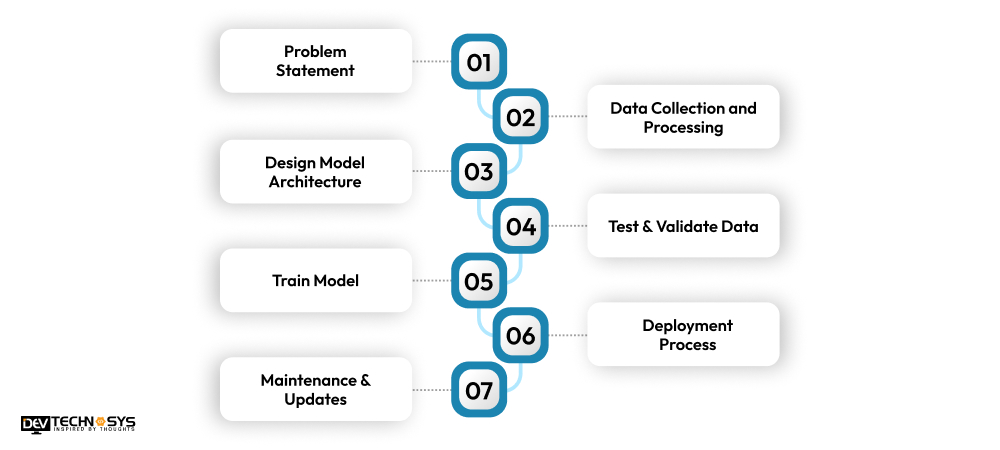
1. Problem Statement
Describe the problem first before starting the process to develop an AI model. List the difficulties you face and indicate the objectives and results you hope to attain. Your model-building activities will be guided by this clarity, ensuring that your business objectives are met.
Working with a specialized Artificial Intelligence development company can provide you with the knowledge and tactical direction you need to finish the process.
2. Data Collection and Processing
Models of artificial intelligence are built on data. Since the model needs to be validated in real-world situations, it is crucial to select datasets that accurately represent those situations.
It is essential to eliminate discrepancies from the data before use through meticulous cleaning and preparation procedures. Data labeling and management must be done thoroughly in order for training to be effective.
3. Design Model Architecture
The architecture of the model must then be developed. This involves tallying the neural network’s layers, neurons, and connections. The performance of the model is significantly influenced by its architecture.
As a result, experiment with several combinations to find the optimal one. Knowing the AI model development cost is beneficial for designing the architectural model.
4. Test & Validate Data
After that, three subsets of your dataset are produced by our team for testing, validation, and training. Testing data is used to determine how well the model performs when applied to untested data, validation data is used to help adjust hyperparameters, and training data is used to train the model. You can hire AI model developers from an AI software development company to continue with the process.
5. Train Model
After entering the training data into the model, your AI app development business in Australia and other countries will utilize backpropagation to gradually alter the internal parameters. Computational resources are required at this point, and modern AI frameworks like Tensor Flow and PyTorch enable efficient model training.
6. Deployment Process
Finally, the testing dataset, which replicates real-world scenarios, is used by the development team to assess the model’s efficacy and performance. If the model meets the required performance standards, it is prepared for deployment. In the course of AI model creation, you can finalize your assets for business success and growth.
7. Maintenance & Updates
AI models need to be regularly reviewed and modified in order to respond to changing data trends. Get user input, track the model’s performance, and make any required modifications to maintain its accuracy and applicability.
In this process, a custom software development company could help you. Now that you know exactly how to build an AI model, let us examine the various tools and frameworks needed to build a strong AI model.
What are the Frameworks and Tools Required For AI Model Development?
Businesses need the appropriate combination of tools and frameworks to ensure accuracy and efficiency to develop an intelligent AI model. The following crucial resources can aid in streamlining the development process:
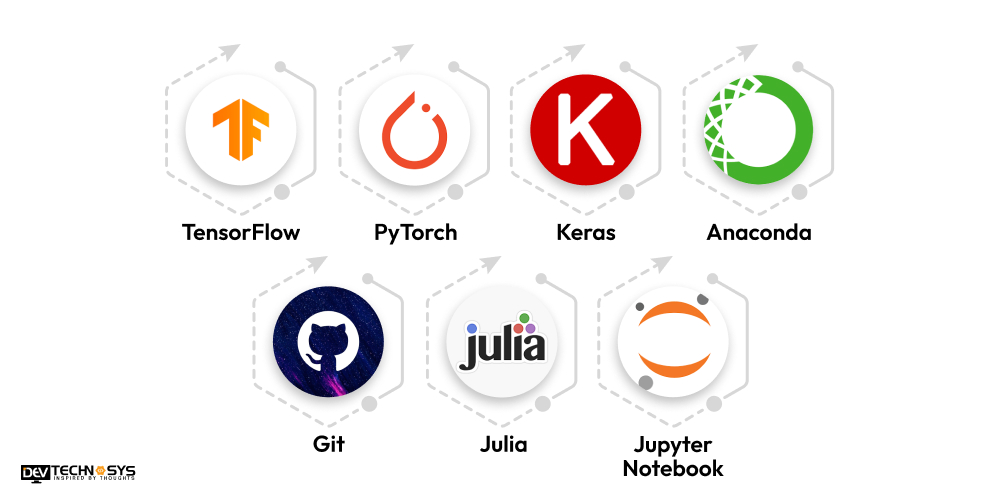
TensorFlow: Especially useful for deep learning, Google’s open-source framework is perfect for creating and refining machine learning models.
PyTorch: A versatile tool from Facebook’s AI Research group, renowned for its dynamic computational graphing in computer vision and natural language processing applications.
Keras: An intuitive neural network API built on top of TensorFlow that facilitates quick deep learning experimentation.
Anaconda: A Python distribution that simplifies package management and deployment in machine learning projects by including a wealth of data science tools.

Git: A version control system is necessary for tracking changes, organizing cooperative AI development projects, and facilitating developer collaboration.
Julia: It performs exceptionally well on computational and numerical tasks, providing high-performance processing for intricate mathematical models.
Jupyter Notebook: This enables exploratory and interactive computing operations by integrating code, graphics, and narrative into a unified interface.
How Much Does it Cost to Create an AI Model?
The complexity of the model, the amount of the dataset, and the level of expertise needed can all have a substantial impact on the cost to develop AI models. The basic software development cost ranges between $8,000 to $14,000, whereas more complex models can cost up to $25,000 or more.
Data gathering, model creation, testing, and deployment are all included in this. Specialized AI tools, cloud computing resources, and ongoing maintenance and updates could all incur additional expenses.
|
Model Structure |
Development Time | Estimated Cost |
| Simple Model | 5-8 months |
$8000-$14000 |
|
Moderate Model |
8-12 months | $14000-$20000 |
| Complex Model | More than 12 months |
$20000-$25000 |
Start The Development!!
To make an AI model a successful enterprise AI solution requires careful design and execution, which is a difficult undertaking. A well-structured data pipeline, large datasets, and high-quality data are all essential components of a successful AI-based intelligent model development project. The importance of establishing a data-driven culture, defining business goals, curating data, and utilizing the appropriate AI technology is highlighted by our proficiency in intelligent AI model-building services.
Many custom software development companies that follow these guidelines to build an AI model are better equipped to take advantage of AI’s revolutionary potential. They can increase output, foster business expansion, and maintain their leadership position. You can achieve your objectives and make full use of AI’s potential for your organization by collaborating with a world-renowned AI development company.
FAQs
1. What is an AI Model?
- An AI model is a mathematical algorithm that learns from data to make predictions.
- AI models are trained using large datasets, allowing them to identify patterns.
2. How to Build an AI Model?
- Gather and clean relevant data to ensure quality input, as the model’s performance heavily depends on the data it is trained on.
- Choose an appropriate algorithm and train the model using the prepared data to learn patterns and make accurate predictions.
3. What is the Cost of Developing an AI Model?
- The cost of developing an AI model can range from $8,000 to $25,000.
- Continuous improvement, retraining, and model monitoring can cost more than $25,000.
4. What are the AI Model Development Challenges?
- AI models require large, high-quality datasets with poor or insufficient data.
- Balancing model complexity to ensure it generalizes well across unseen data.
5. How Dev Technosys Helps Investors Creating an AI Business Model?
- Dev Technosys is a leading Artificial Intelligence app development company.
- We provide proficient developers with competent skills.



